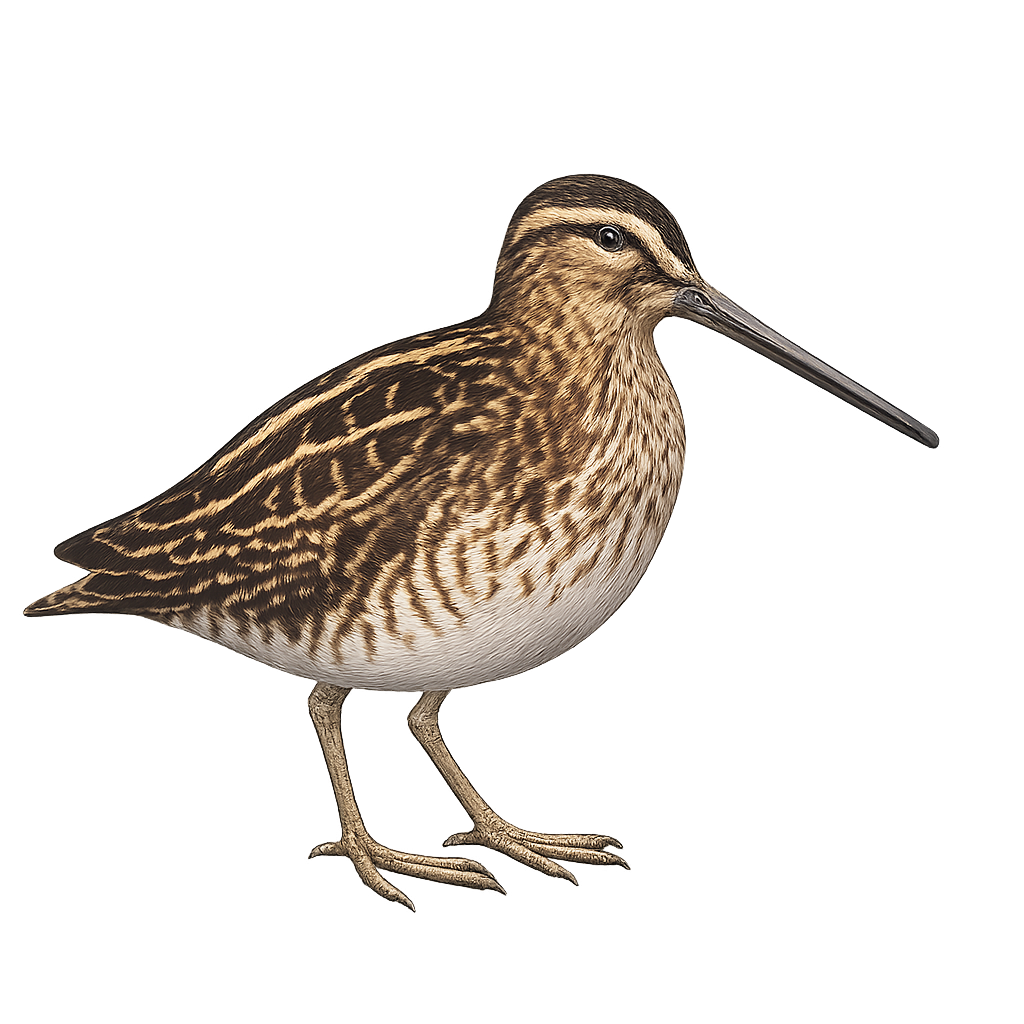Your wildlife photography guide.
Explore the great snipe in detail, study its behavior, prepare your shots.
Where to observe and photograph the great snipe in the wild
Learn where and when to spot the great snipe in the wild, how to identify the species based on distinctive features, and what natural environments it inhabits. The WildlifePhotographer app offers tailored photography tips that reflect the great snipe’s behavior, helping you capture better wildlife images. Explore the full species profile for key information including description, habitat, active periods, and approach techniques.
Great Snipe
Scientific name: Lymnocryptes minimus

IUCN Status: Least Concern
Family: SCOLOPACIDAE
Group: Birds
Sensitivity to human approach: Suspicious
Minimum approach distance: 30 m
Courtship display: April to June
Incubation: 19-21 jours
Hatchings: April to June
Habitat:
Wetlands, marshes, and floodplain meadows
Activity period :
Primarily active during the day, with peak activity in the morning and late afternoon.
Identification and description:
The Jack Snipe is a small, discreet wader, often difficult to spot due to its cryptic plumage that blends perfectly with its environment. This small bird, with its brown and mottled plumage, primarily inhabits marshes and bogs in Northern Europe and Asia. It feeds on invertebrates, mainly worms, insects, and mollusks, which it finds by probing the mud with its short, straight bill.
The Jack Snipe adopts a stealthy behavior and is often observed hiding in dense vegetation or freezing when threatened. While more difficult to observe due to its discretion, it is threatened by habitat loss and changes in the hydrological regime in its breeding areas.
Recommended lens:
300 mm – adjust based on distance, desired framing (portrait or habitat), and approach conditions.
Photography tips:
Approach slowly and discreetly, using a telephoto lens to avoid disturbing the marsh sandpiper, which is often difficult to spot and can fly away quickly if it feels threatened.
Photograph early in the morning or late in the afternoon, when the light is soft and the sandpiper is more active in the marshes or wet meadows searching for food.
Capture moments of foraging: The marsh sandpiper uses its long bill to probe the mud for insects and small invertebrates, providing interesting opportunities for photography.
Be patient: This species spends a lot of time feeding, so wait until it is more visible before taking a photo.
Although the marsh sandpiper is not currently endangered, it is sensitive to disturbances in its wetland habitat, especially during the breeding season. Make sure to respect the animal's natural environment and follow local conservation rules to preserve this species.
The WildlifePhotographer App is coming soon!
Be the first to explore the best nature spots, track rutting seasons, log your observations, and observe more wildlife.
Already 1 429 wildlife lovers subscribed worldwide

